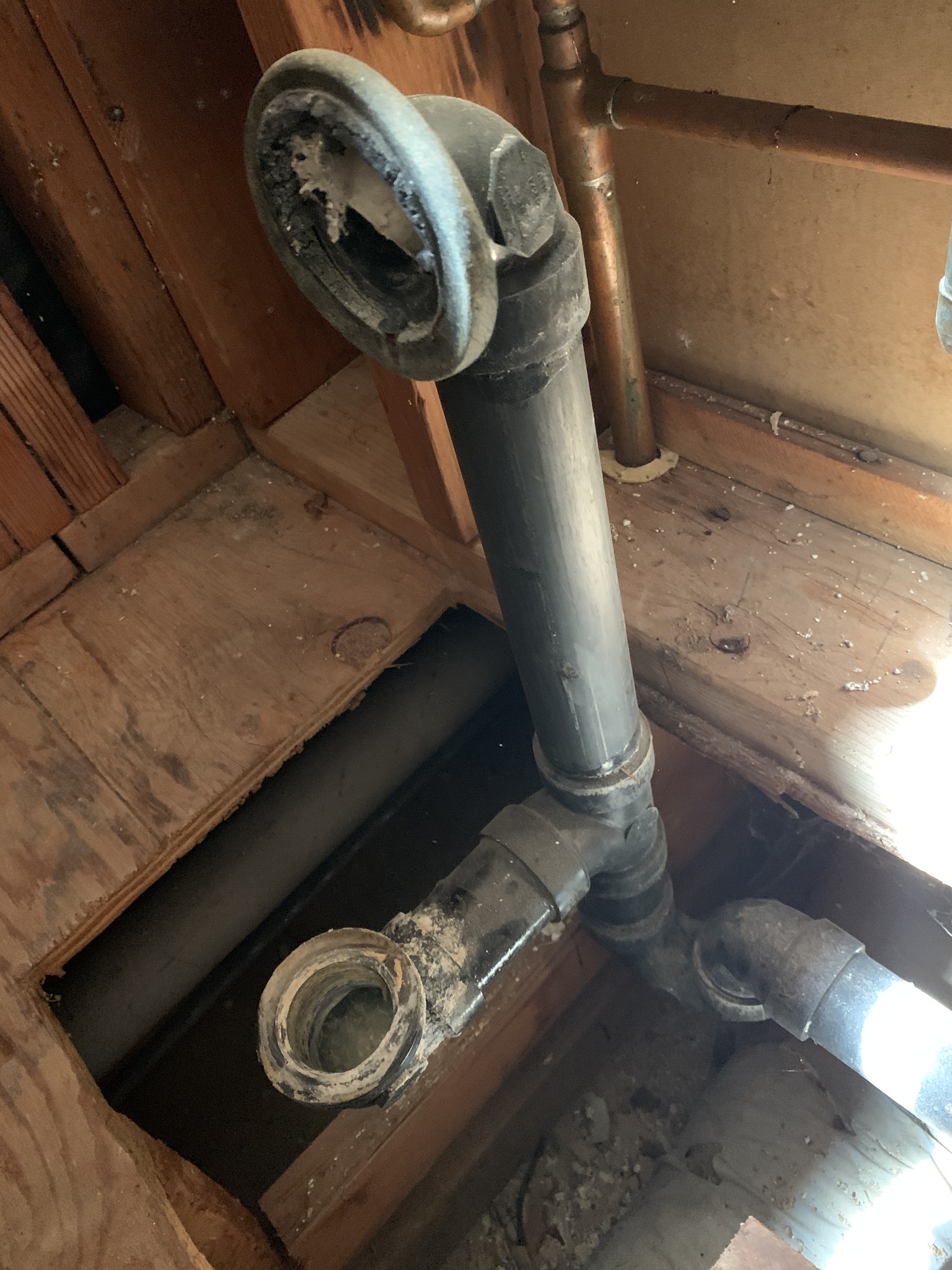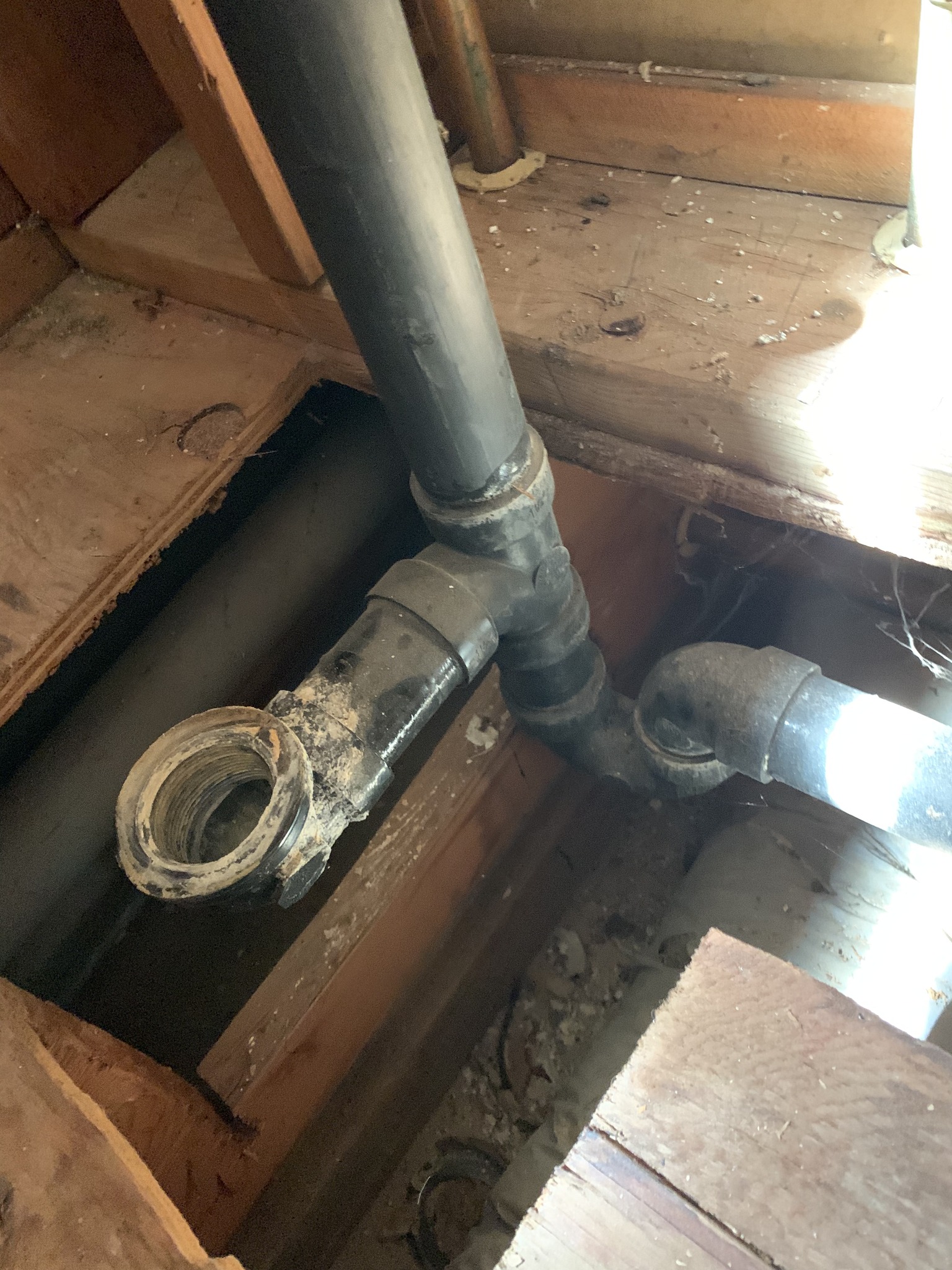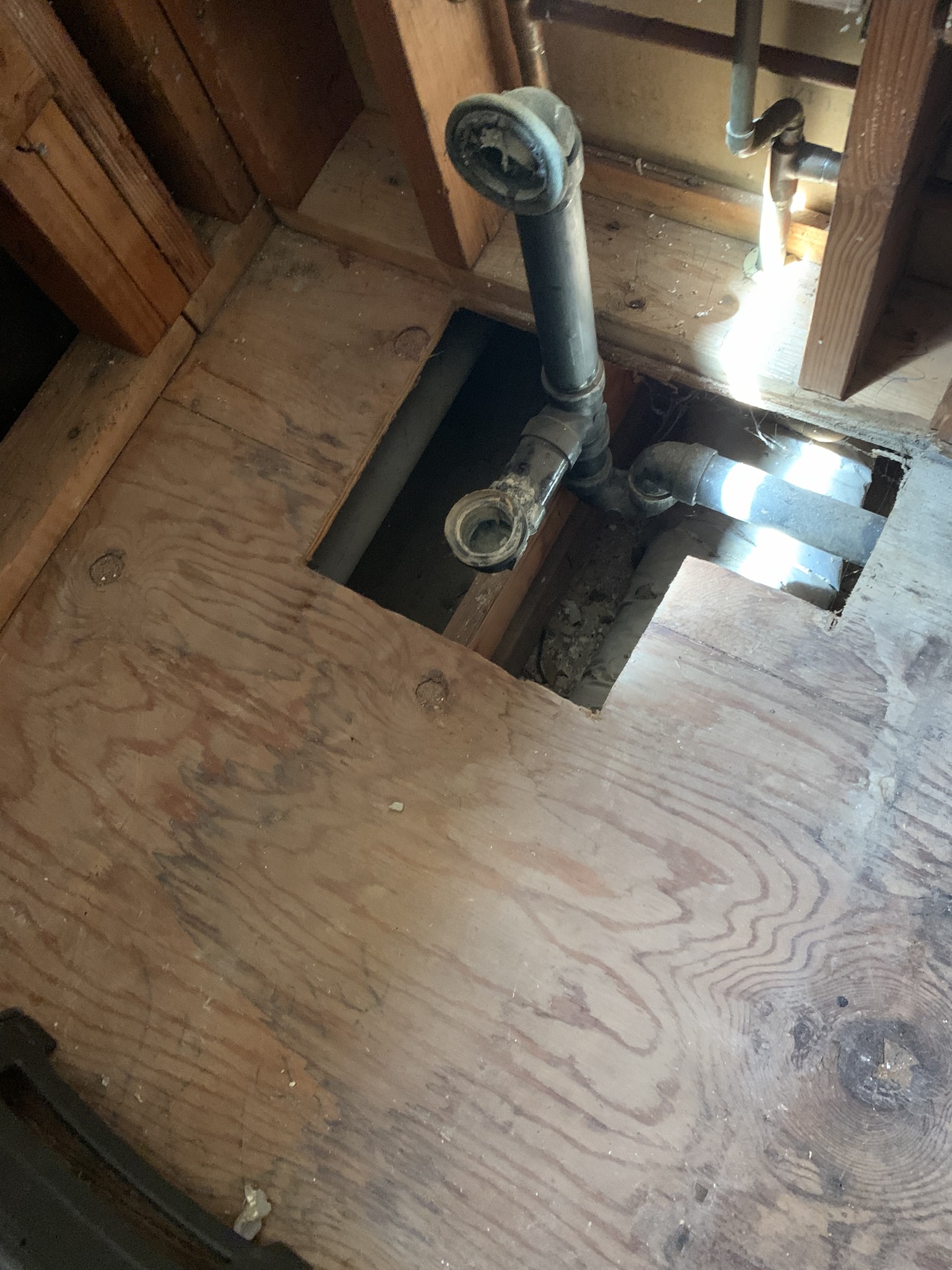Can I simply add a 1.5 to 2 coupling on the drain side of the ptrap when converting a showertub to just a shower, or is there a better drainage solution for this project?
1 year ago
Last Updated: May 17, 2024
I want to switch my shower/tub combo to just a shower. Right now, I have a 1.5″ drain for the tub, but I need to change it to a 2″ drain for the shower. Do you think I can just add a 1.5″ to 2″ coupling on the drain side of the p-trap? Or would it be better to add the coupling behind the p-trap and use 2″ pipe and p-trap as far back as possible for better drainage? Also, do you think drainage will be okay with the new shower setup? And if I decide to make it a center drain shower, should I keep the drain higher than the one coming out of the p-trap? Any advice would be greatly appreciated for this project – thanks in advance for your help!



Ideally, it should remain 2 inches throughout. In most scenarios, inspectors tend to be lenient during renovations. It seems to be ABS material. Personally, I would opt for a consistent 2-inch size if it were my own property.
It’s a bit difficult to determine from the images, but to me, it appears to be a 2-inch pipe.
I decided to get a plumber to help me out with that. He ended up removing it and installing a P trap, then adjusted the drain to where I wanted it. After that, he also adjusted the water lines for the shower controls.
The only reason to make a change would be to comply with local building codes. Therefore, the best course of action is to follow whatever your local regulations dictate.
I’ve worked on multiple showers using 1-1/2 inches, where I’ve downsized them from 2 inches to 1-1/2 inches directly at the drain fitting. My reasoning was that if there was a backup, I’d prefer it in the shower. So far, I haven’t encountered any issues with the 5 or 6 showers I’ve handled in this manner.
I remove the old p-trap and install a new one that goes from 2 inches to 1 1/2 inches at the pipe, you’ll be good to go. I work with showers and baths all the time, so no worries!
Hey , remember you shouldn’t transition from a bigger pipe to a smaller one. The code states it should be 4 feet away from the tee on 1 1/2. You can use a 1 1/2 trap for the shower and then bush it with a 2×1 1/2 bushing for your shower pain strainer.
Can you give me some info on moving to a center drain? Does the p-trap need to be closer to the drain?
First step is to determine which pan will fit the space. Typically, common sizes like 60” x 30, 32, or 34” will work. Once you have the pan, identify where the drain is located in relation to the space. Install the new drain in that location. I always wait to work on the drain until I have the new pan or tub. It’s not hard, just make sure it fits before gluing it in place. You can do this!
Make sure to locate your new drain connection in custom situations and ensure that it is properly plumbed.
I was considering tiling the floor (about 60×32) and using an Oatey shower pan liner with dry pack. I welcome any suggestions though!
Gary, that sounds good. Just remember that tile and grout need regular upkeep and can hold water if not done right. I’ve been setting up custom shower bases from various companies. Personally, I think a solid one-piece base is the way to go and can be paired with any wall material.
Start fresh by cutting out the p trap and entire assembly. Consider using a high-flow low-level shower trap (or a new p trap if space allows), and attach it back to the outlet pipe with a suitable reducer as 1 1/2 inches should be sufficient for a shower.
I’m definitely not a pro in plumbing or framing, but…does that joist have a notch? That would be the first thing I’d look into.
Is currently placed on the ground. It’s all good.
Feel free to place the drain for the new shower wherever you prefer. Just go with what feels right. Keep in mind the floor needs to slope correctly for tiling purposes. If the tile is level all around the edge, a steep slope towards the drain may not be ideal.
Hadn’t considered the steep slope challenge… maybe I should consider using a shower pan instead of tile for this 60×32 area.
Wasn’t too concerned. I recently completed a shower of similar size without any issues with the slope. Are you using small tiles like 2×2?
Hey , that’s the plan, right?
Just a heads up, the slope could pose a problem if the drain is, for example, 1 foot away from the end wall and 5 feet away from the far wall.
Place a bushing slightly beyond the shower spud.
If you ever need plumbing advice, don’t hesitate to reach out to Ask A Plumber – it’s a great resource.
For the new shower drain, you’ll have to relocate the P trap. Simply cut it back by 1.5-2 inches, use a coupler, and route your new drain.
Plumbing in the United Kingdom is quite simple – we use plastic pipes, plastic traps, and flexi plastic. Looking at plumbing across the pond, it seems much more complex and outdated. Why make an easy job difficult? For example, we have an overflow on the bath with a flexi pipe running into the bath grating above the thread, connecting to a plastic P trap. It’s the same concept for the washing machine – a flexi pipe straight from the machine to the grating under the sink unit, with a P or S trap fitted underneath. It’s so simple, yet there seems to be a 10 to 20 year lag compared to us. Our gutters, downpipes, underground drains, and soil pipes are all made of plastic – time to step out of the stone age.